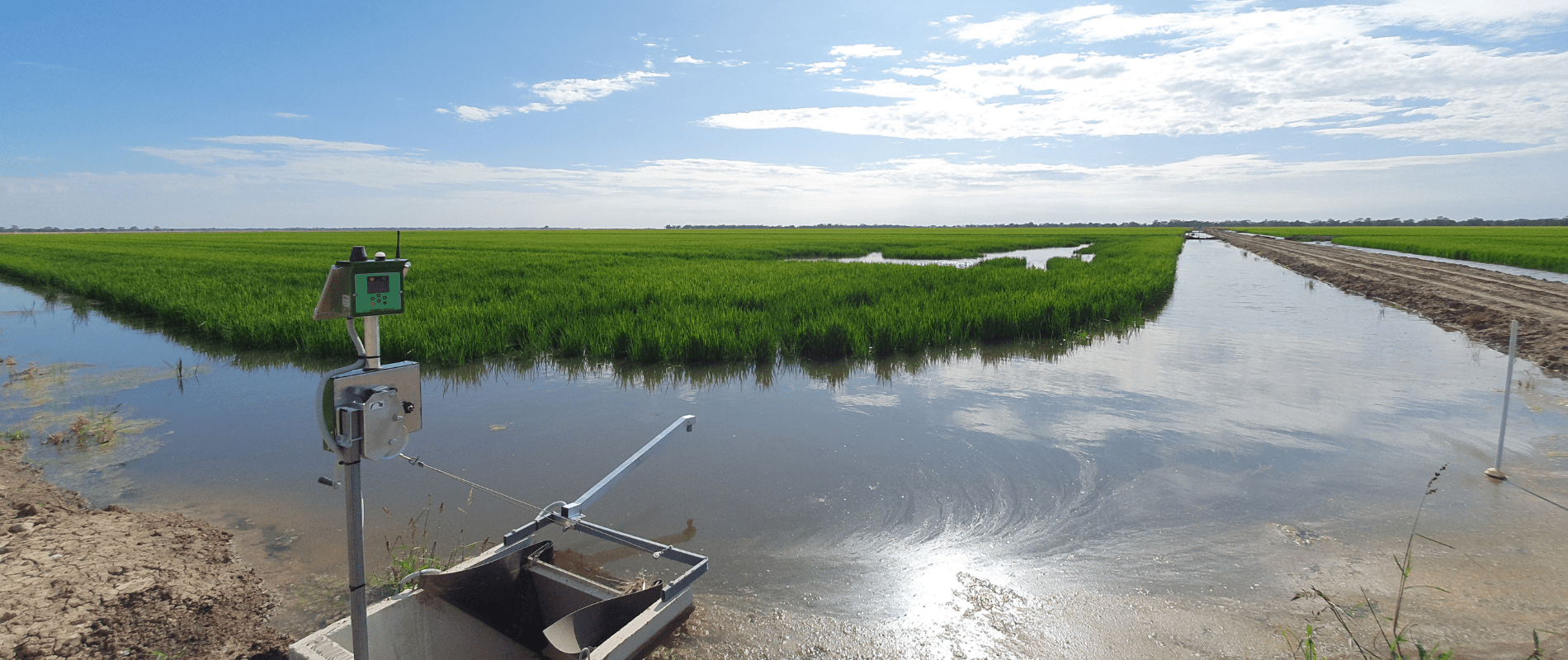Matt Champness, a former CEAT Emerging Scholar, is currently undertaking a PhD with Deakin University’s Centre for Rural and Regional Futures based in Griffith NSW. His project is focused on developing integrated smart sensing and irrigation automation systems for rice growing capable of delivering the needed high level control parameters. The ultimate goal is to successfully move towards a drier rice system of production, while reducing labour requirements and making more precise decisions on water management.
This project is developing industry ready tools that enable automated rice irrigation to maximise water use productivity and reduce labour requirements – two increasingly important elements in rice production. In short, the benefits to the grower are water savings and reduced labour which means more time spend with family or on other farm activities and less time changing water at 3 am – very attractive to employees.
As water becomes scarcer and the price climbs, rice growers are adopting water saving practices, such as delaying the onset of permanent water by conducting multiple flush irrigation events early in the growing season before applying permanent water. Matt has found inconsistency regarding when farmers choose to initiate these flush events, which is generally due to a lack of substantive data to assist with decision making. Furthermore, this occurs during winter crop harvest, a period when farmers have little time to drive around changing water.
Another benefit of automation is that it allows for irrigation to occur while land managers are busy undertaking other activities. This technology is available now, however the optimal point at which to trigger an irrigation event is unknown. Therefore, Matt is researching the trigger points to for when irrigation needs to occur in delayed permanent water and aerobic rice systems. This involves experimentation on commercial farms to determine the extent of soil moisture depletion without adversely affecting yield to maximise water productivity (maximum tonnes of rice with minimum water).
Integration of short term (7 day) weather forecasts enable soil moisture forecasting to assist farmers in predicting when the moisture threshold will occur, giving them sufficient time to order water and apply any necessary fertiliser or herbicides and then have the irrigation occur automatically in a closed loop system. All this can happen while land managers simply observe from their tablet or mobile device from the tractor or the beach – a much better option than driving around and around checking by eye.
Story by Matt Champness.
